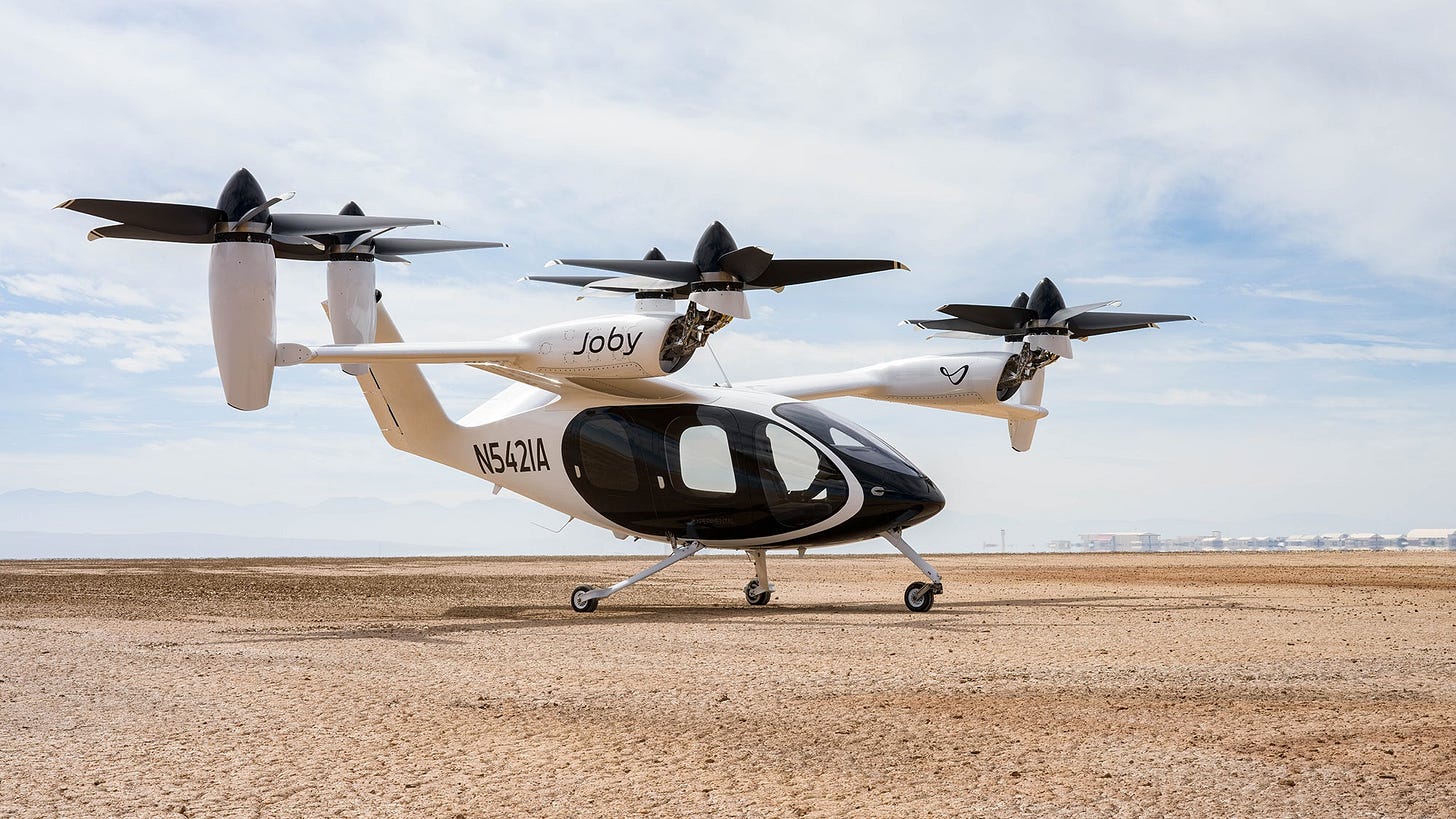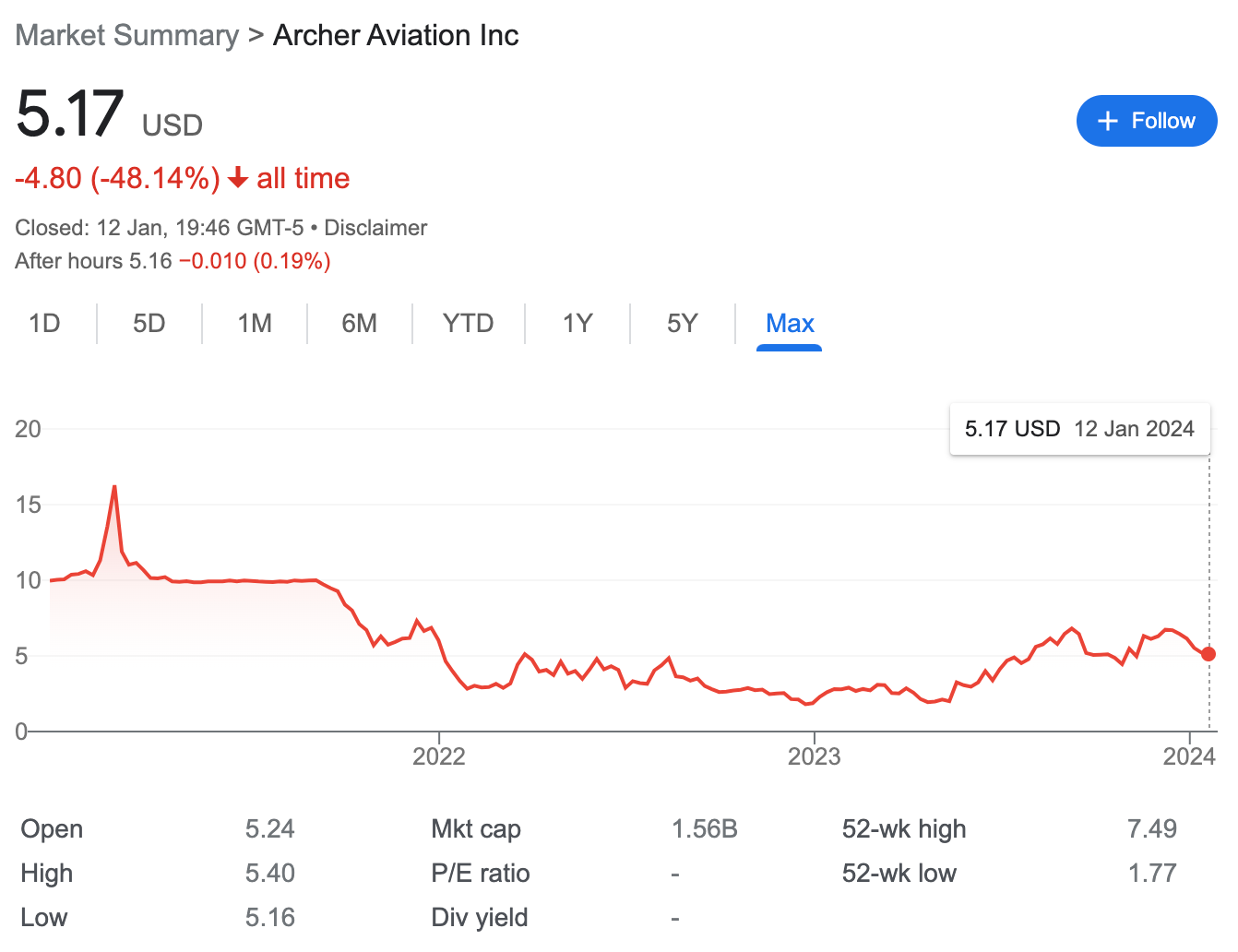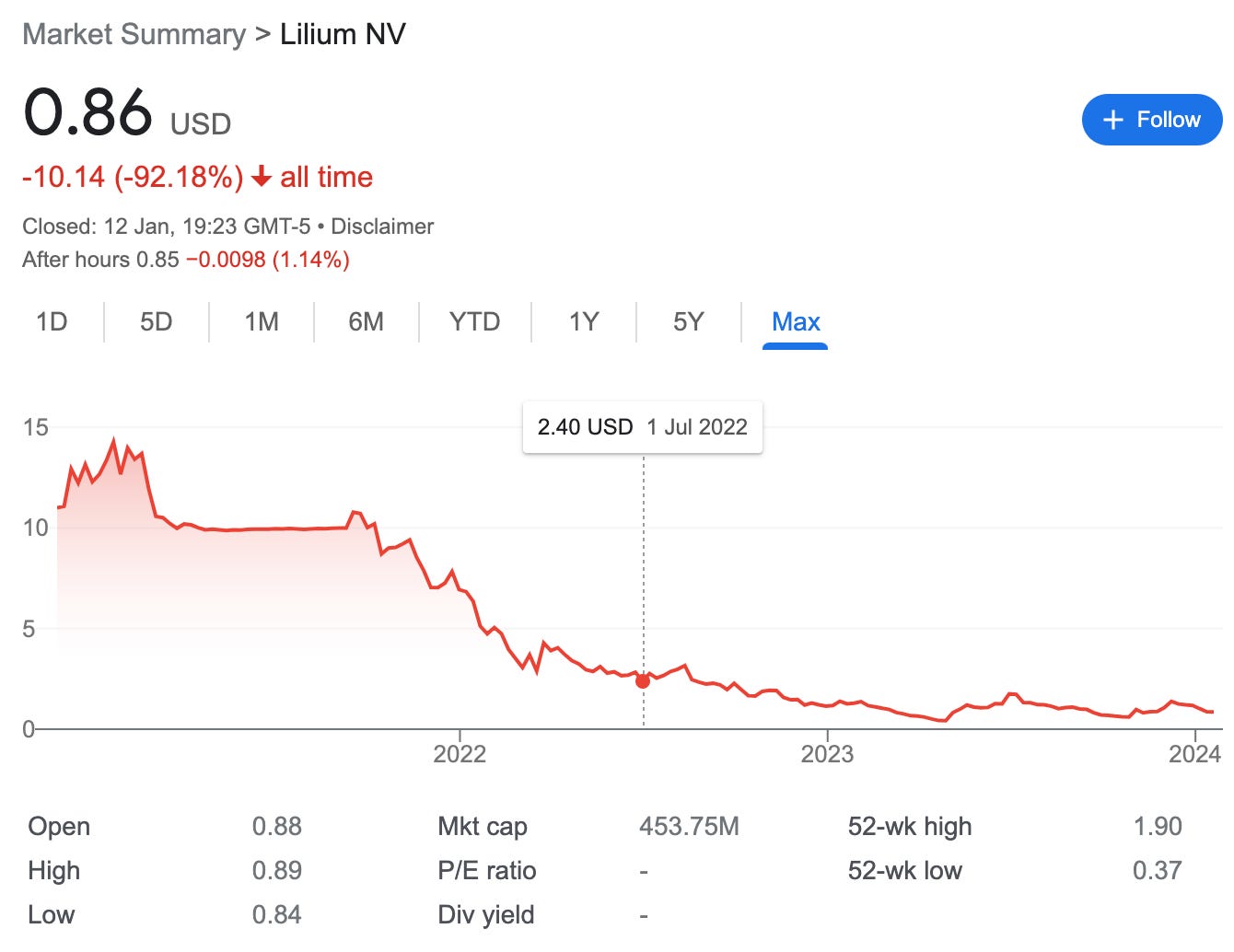Air Rights Help Cars To Fly
Underutilized Assets Put To Work
Flying cars, a potential $1.5 trillion opportunity by 2040 (Morgan Stanley) need the permission of air rights owners who control the $613 trillion real estate industry (Galaxy Research).
Who Is The Bookies Favorite?
Despite recent market fluctuations, Joby Aviation is on track for a commercial launch by 2025. The company's strategic partnership with Japan, advancements in air taxi operations, and early delivery of electric air taxis to the U.S. Air Force demonstrate its commitment to developing its technology and business.
Archer Aviation, currently being knocked by market shifts, has ambitious plans to launch air taxi services in Abu Dhabi and Dubai by 2026. The recent memorandum of understanding (MOU) with Air Chateau International for 100 Midnight aircraft adds to the company's chances of commercial success, supported by Barclays analysts raising their price.
Lilium has seen recent market fluctuations and has had a rough ride, layoffs and less-than-impressive share prices indicate where confidence is, but it remains a contender. Signing a memorandum of understanding (MOU) with Lufthansa Group, the legacy airline for eVTOL operations in Europe and collaborating with CITIC Offshore Helicopter for eVTOL operations in China they hope to position Lilium for success.
There are many more flying car, aka eVTOL, companies but these three are battling for position and cash. What is clear is there is no outright winner yet, perhaps there never will be one winner.
In the short run, the market is a voting machine but in the long run, it is a weighing machine - Benjamin Graham
A collective of legacy airline operators and car companies as key investors, vendors and customers trying to become innovative seems like a hard call to make. In any event, what is clear is they need air space for their operations or they cannot take off, and that is where the real innovation happens.







